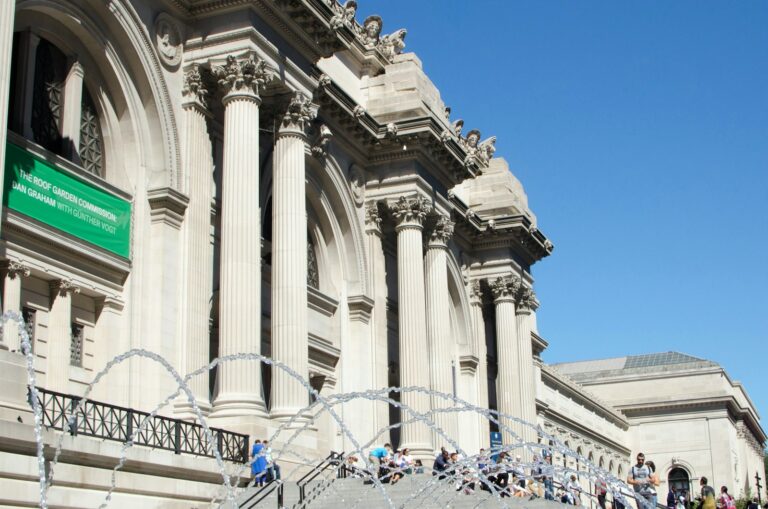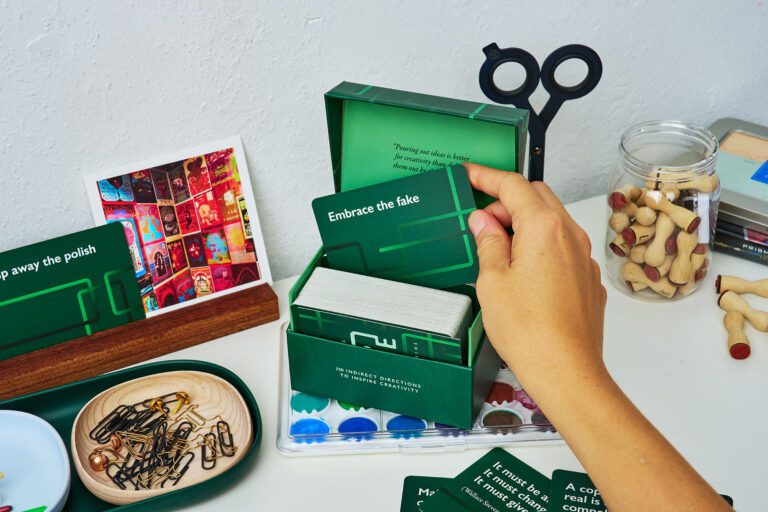
Claudia dropped her violin case into a sarcophagus, could have been this one:
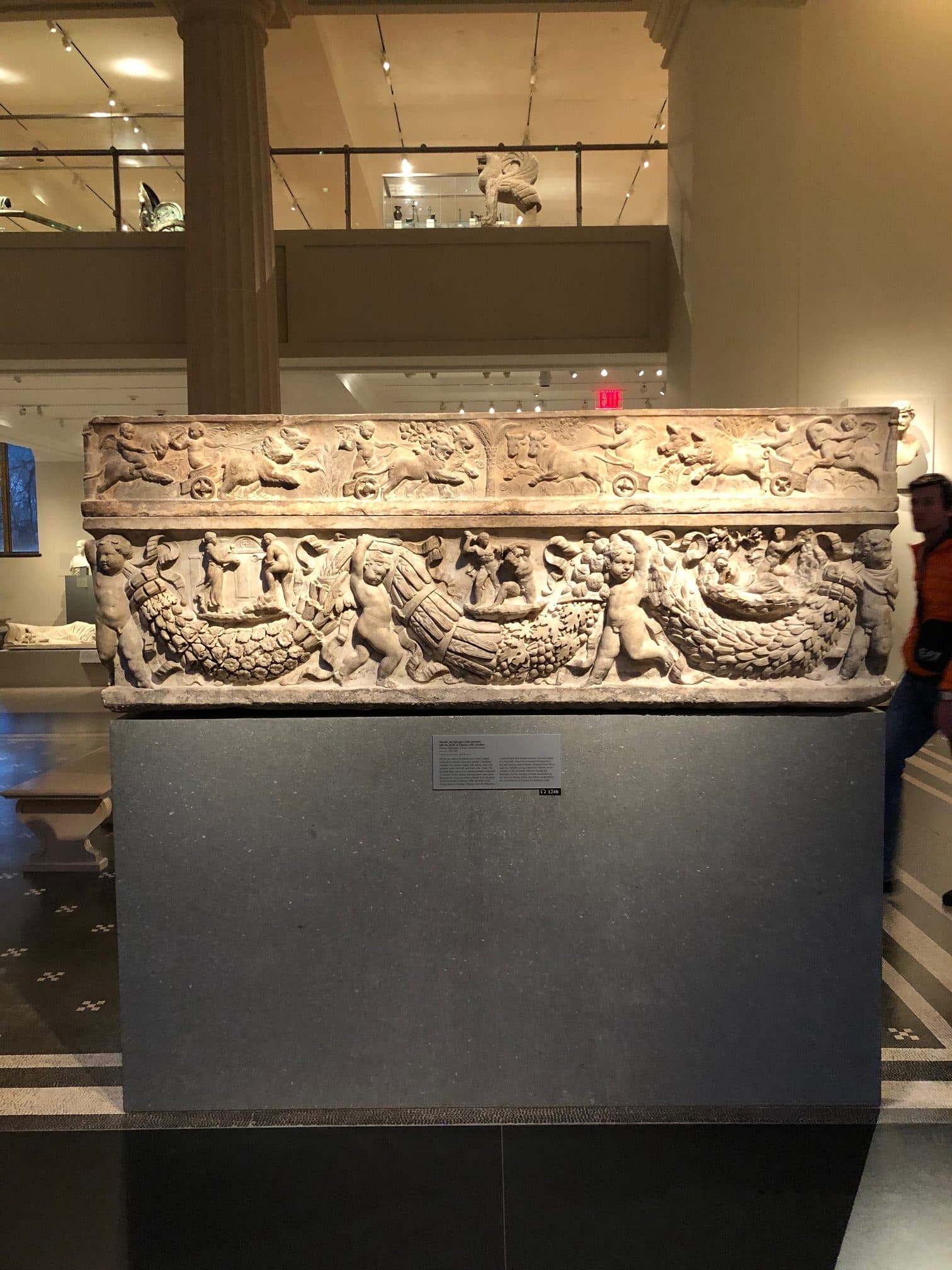
Claudia “wanted to sit on the lounge chair that had been made for Marie Antoinette”—here’s that chair:
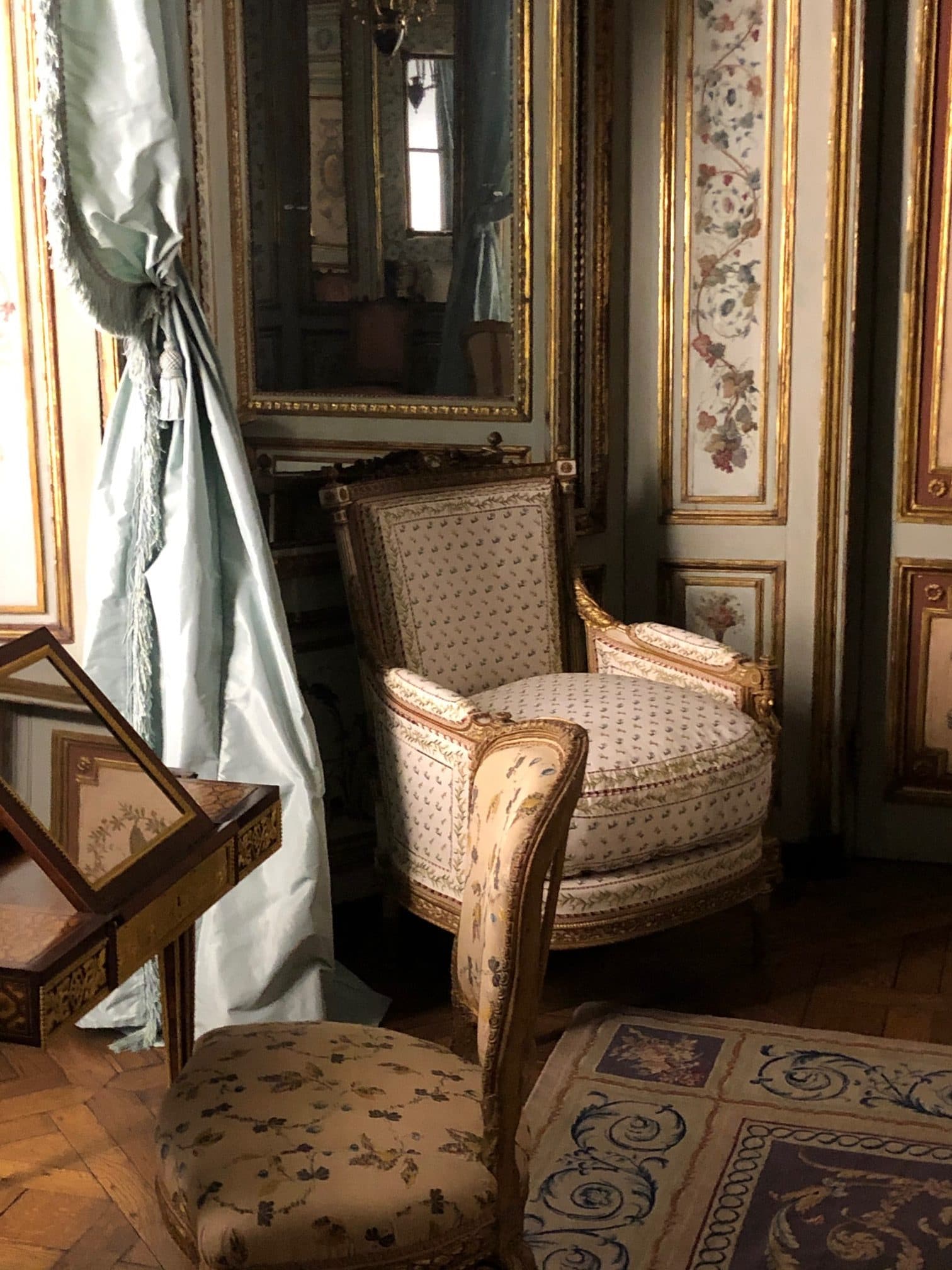
Here’s an example of the kind of Egyptian jewelry they learned about:
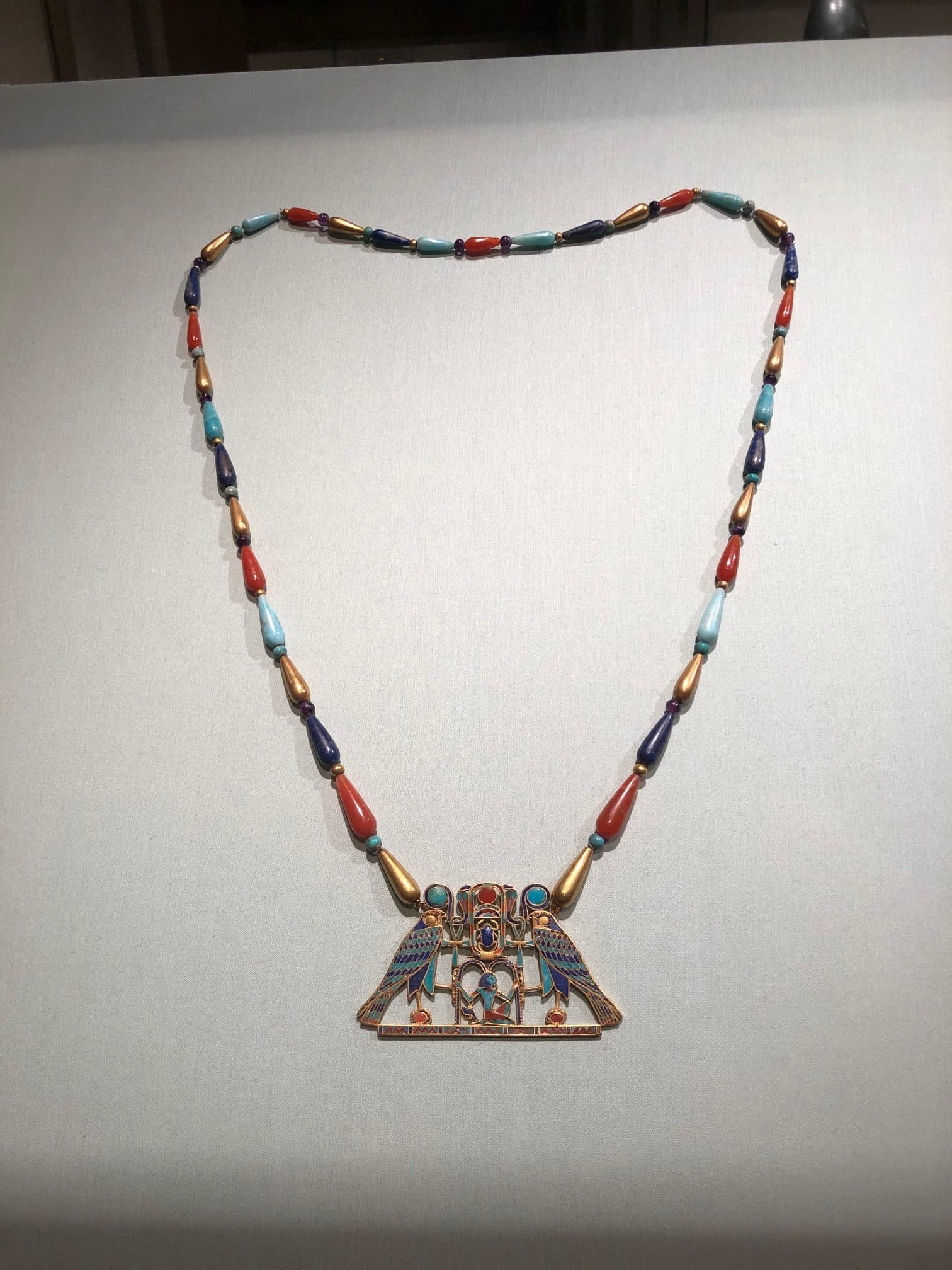
James, ever mindful of money, asked how much it cost to become a mummy, like this one:
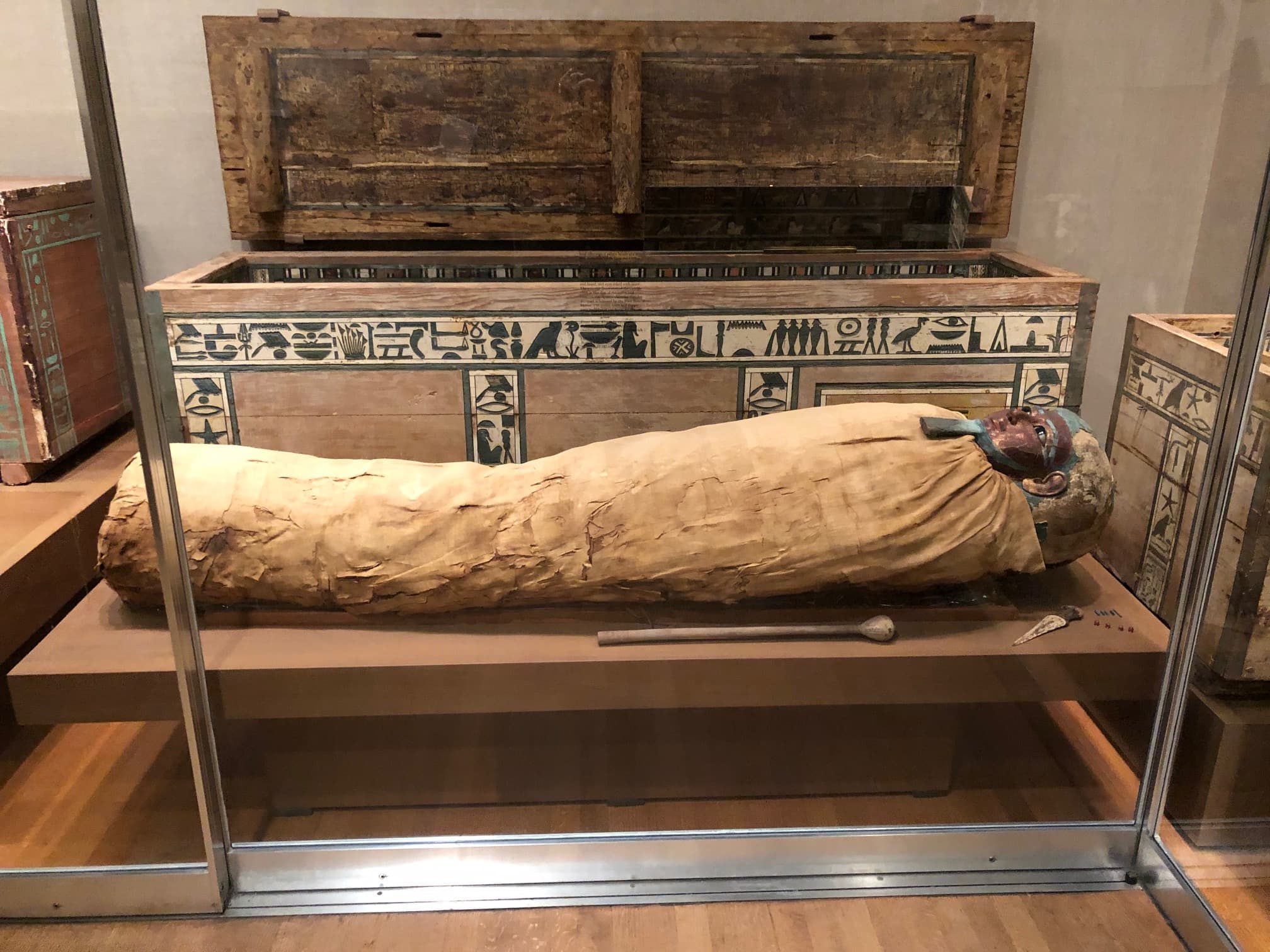
Here’s the mastaba where they run into James’s third-grade class, on a school trip from Greenwich, Connecticut:
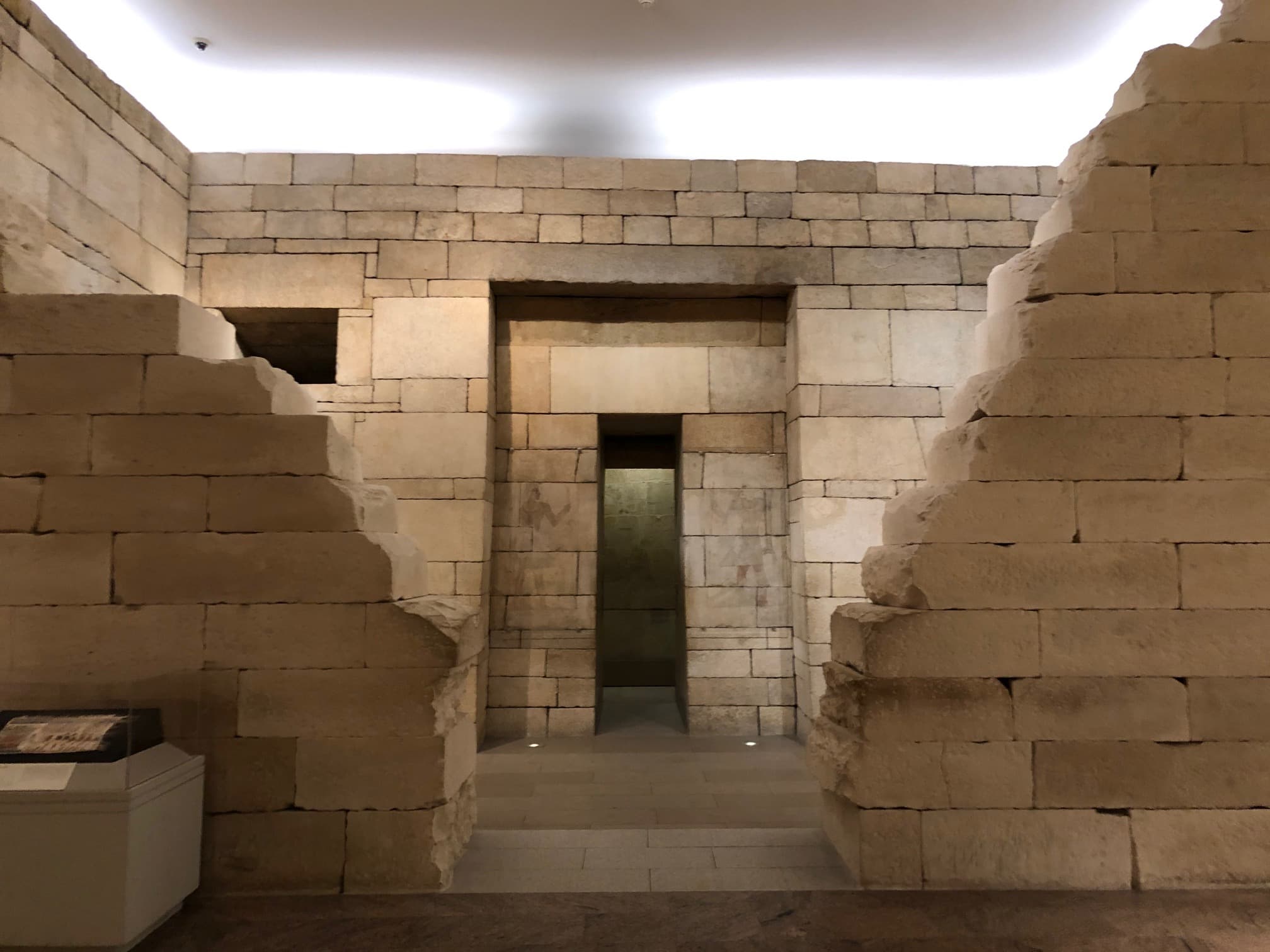
Here’s my favorite find—the bronze cat much like the one that described in the novel as wearing the same expression as Claudia:

The whole novel revolves around the question of whether Michelangelo carved an Angel statue. Here’s a Cupid statue by Michelangelo:
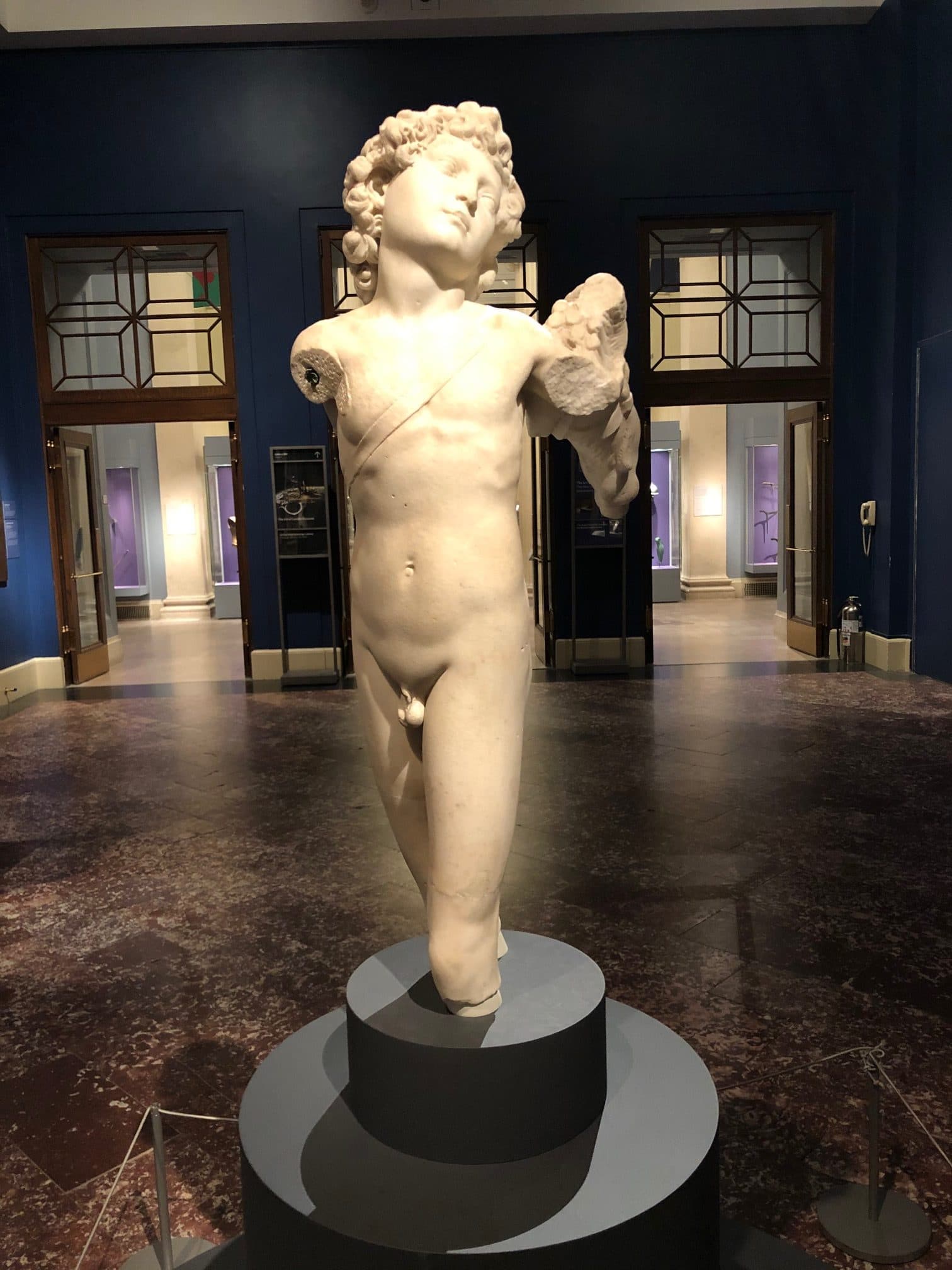
As the map in the book makes clear, many things about the Met have changed since the book was published in 1967. For instance, the large fountain where Claudia and James take their baths and collect money is gone.
But it’s still what Claudia dreamed of: “a large place, a comfortable place, an indoor place,” and finally, “a beautiful place.”
If I were the head of the Met, I’d create a permanent acknowledgement of From the Mixed-up Files. I think I’d stash a violin case and a trumpet case in some hallway corner or under a stairwell. I can only imagine the great pleasure visitors would feel, spotting them there. For instance, what about this odd little neglected corner in the Egyptian wing?
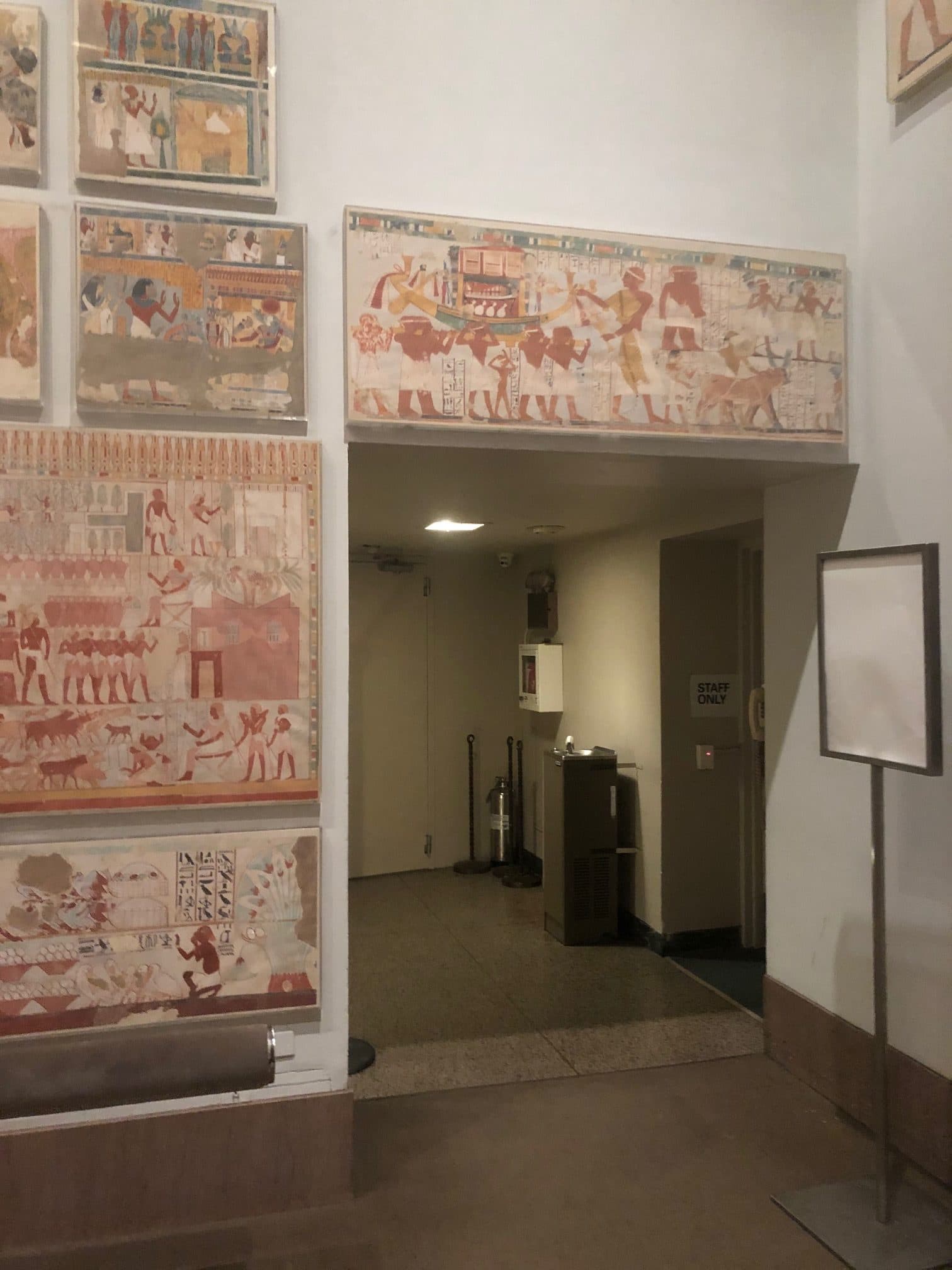
Do children still read this book today? I hope so. It’s so good. But I have to admit, I don’t think I truly understood exactly who Saxonberg was, and how Mrs. Basil E. Frankweiler fit into everything, until I was quite grown-up. This is a novel that works on many levels.
In case you haven’t read the book, its first paragraph will make you want to read more:
Claudia knew that she could never pull off the old-fashioned kind of running away. That is, running away in the heat of anger with a knapsack on her back. She didn’t like discomfort; even picnics were untidy and inconvenient: all those insects and the sun melting the icing on the cupcakes. Therefore, she decided that her leaving home would not be just running from somewhere but would be running to somewhere. To a large place, a comfortable place, an indoor place, and preferably a beautiful place. And that’s why she decided upon the Metropolitan Museum of Art in New York City.
If you want to read more, read Jia Tolentino’s terrific New Yorker story, “From the Mixed-up Files of Mrs. Basil E. Frankweiler,” Fifty Years Later.
One of the most fascinating details from the piece explains how Konigsburg got her idea:
One day, as [Konigsburg and her three children] were walking through a gallery of French furniture, she saw, behind a velvet rope, a single piece of popcorn on a blue silk chair. When Konigsburg died, in 2013, the Metropolitan Museum of Art hosted a private event in her remembrance, and her son Paul recalled his mother wondering aloud about that piece of popcorn. The moment was “burned into shrapnel memory” for her, he said, and it provided the kernel, so to speak, of the whole book.
If you haven’t read From the Mixed-up Files of Mrs. Basil E. Frankweiler, run, don’t walk, to get your copy.
I love it for many reasons, and one reason is that I see the Met through different eyes, because of it.
Follow along with my photos at #GretchenMetExperiment.



